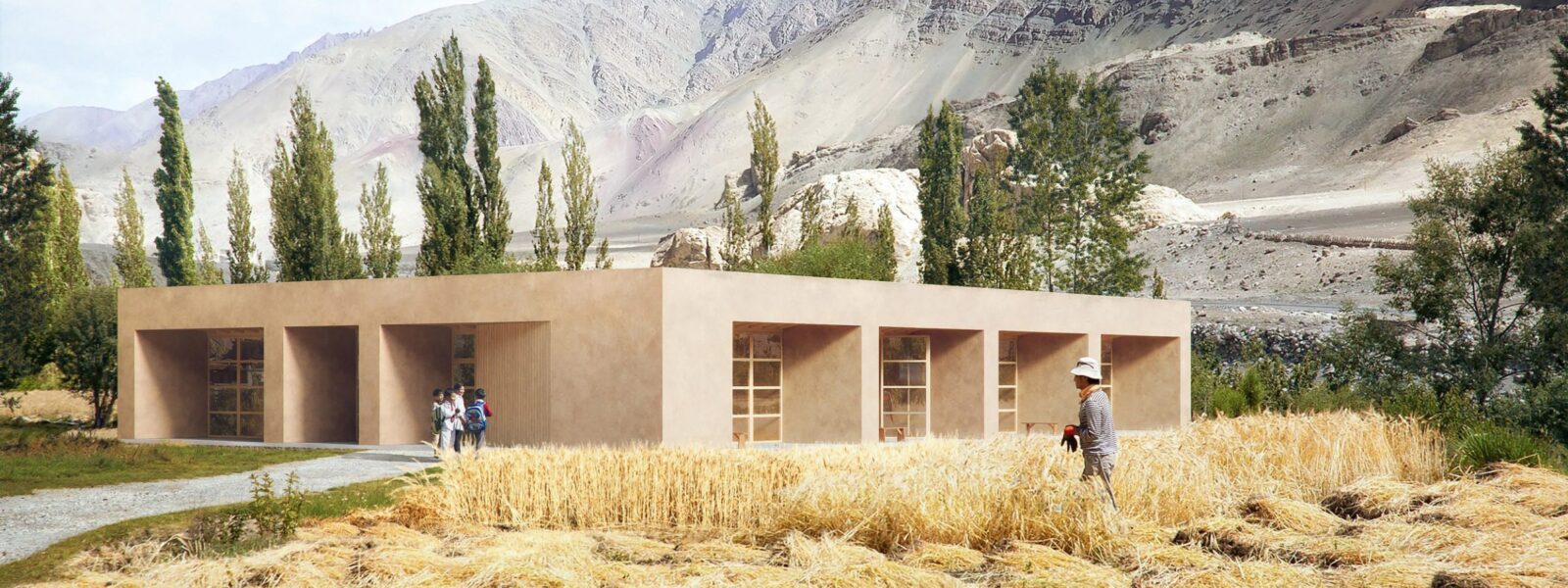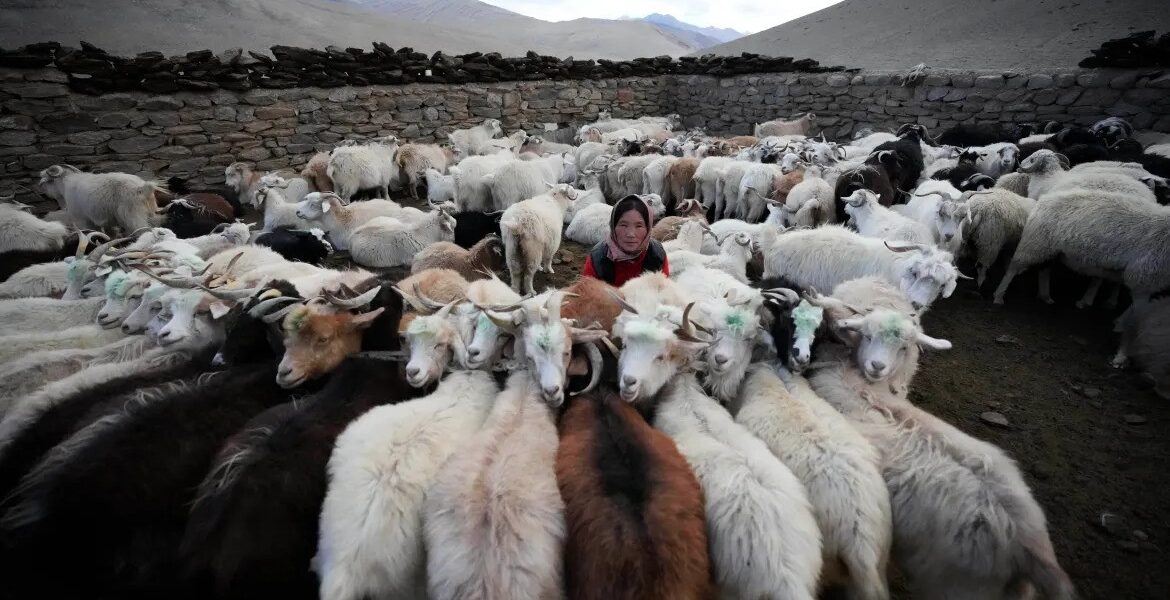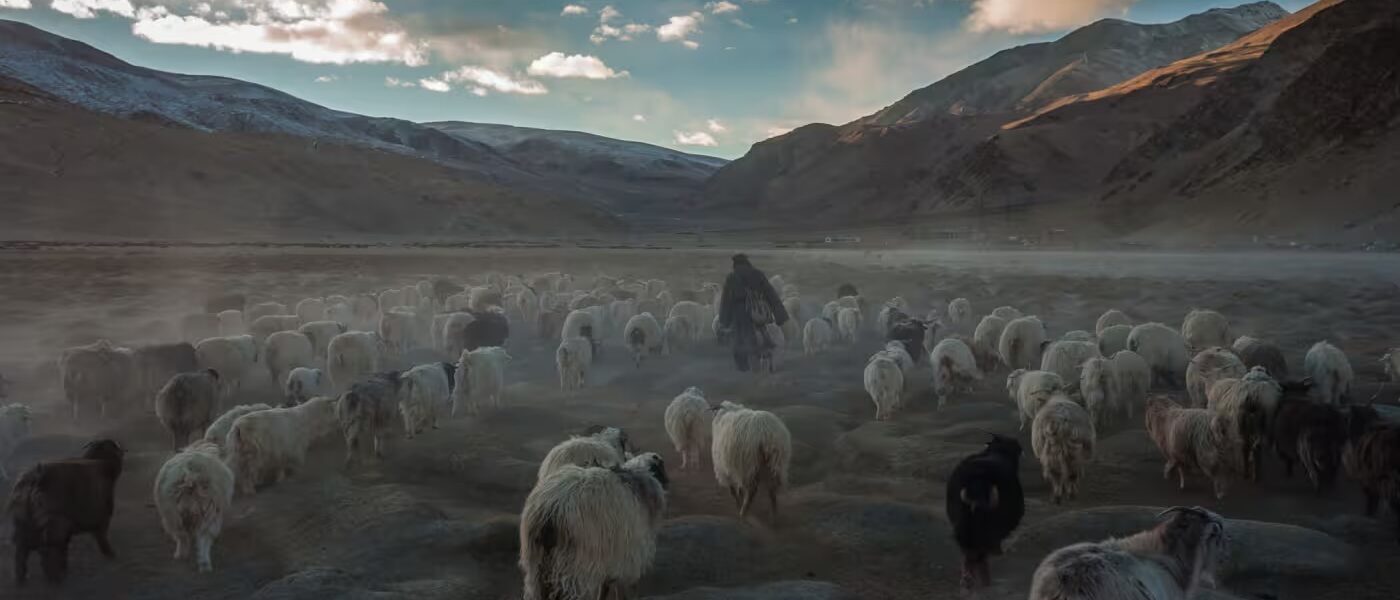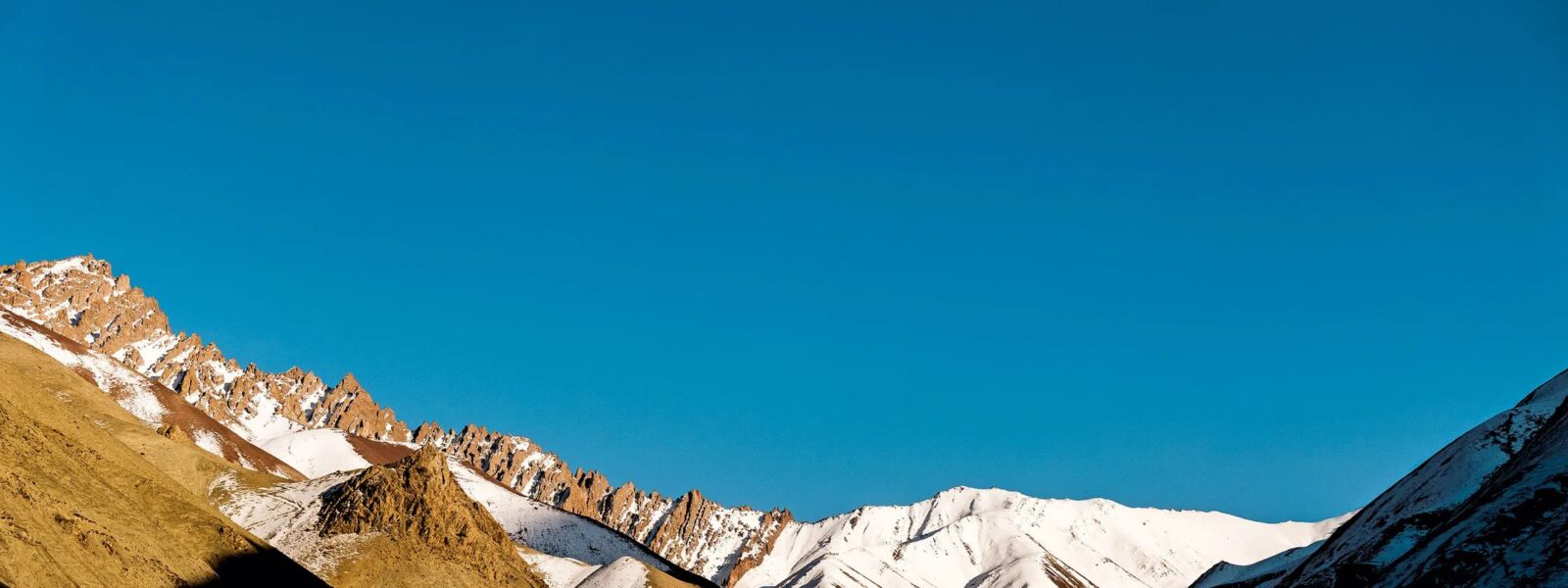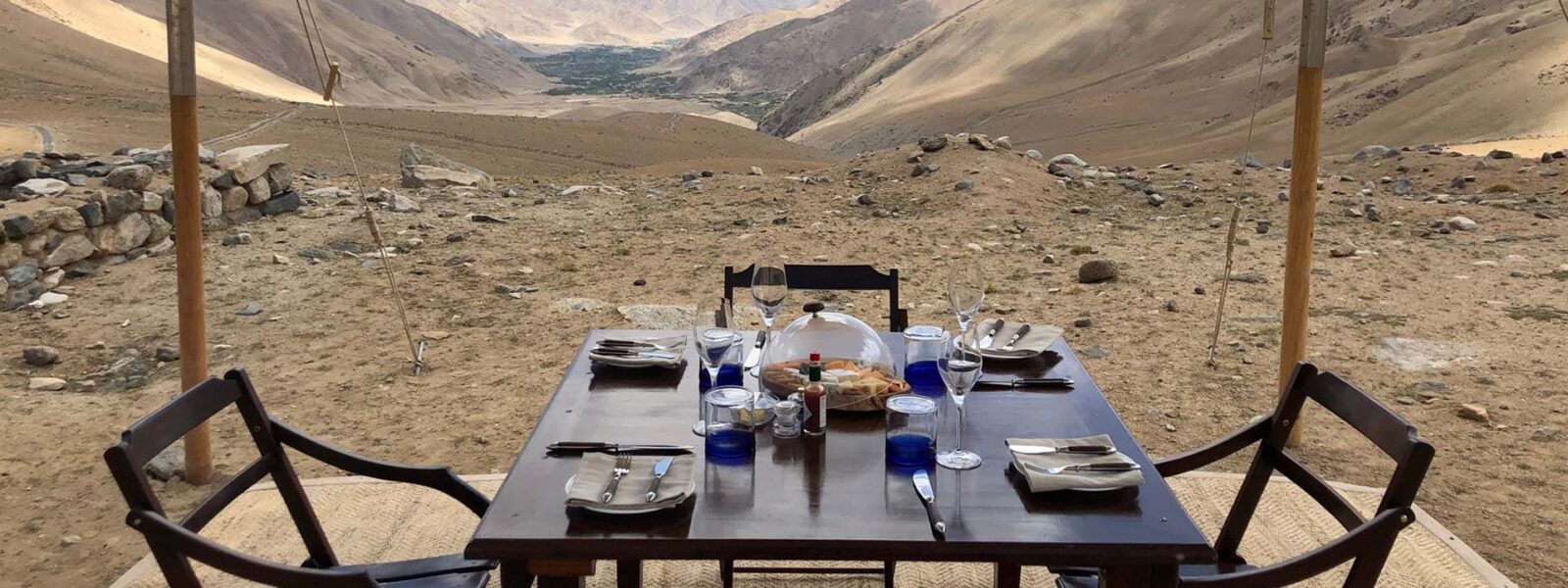Why Sustainable Tourism Matters in Ladakh
Ladakh, nestled high in the Indian Himalayas, is a region of dramatic landscapes, ancient traditions, and rare biodiversity. Its harsh climate and fragile ecology make it both a natural wonder and a region in need of careful stewardship. With tourism booming in recent years, it has never been more important to understand the significance of traveling sustainably in Ladakh. Every action we take as travelers has a ripple effect — especially in a high-altitude desert where resources are limited and ecosystems are delicate.
Understanding Ladakh’s Fragile Environment
Ladakh is a cold desert with very little rainfall and a short growing season. Its environment is not just sensitive — it’s extremely vulnerable to sudden changes. Most of the water used for drinking and farming comes from glacier melt, and climate change is already disrupting this balance. Wildlife such as the snow leopard, Himalayan marmot, and Tibetan wild ass survive in a finely tuned system that is easily thrown off by human interference.
The barren hills and deep valleys might seem indestructible, but they are among the most erosion-prone landscapes in the world. Soil here regenerates slowly, and vegetation takes years to return once damaged. Excessive trekking off-trail, irresponsible camping, and littering accelerate erosion and habitat loss. Understanding this context is the first step toward becoming a more conscious traveler in Ladakh.
The Impact of Mass Tourism
In recent years, Ladakh has witnessed an exponential rise in visitor numbers. While tourism provides crucial income for local communities, it also brings serious environmental challenges. The increased demand for water, electricity, and waste disposal strains the limited infrastructure in places like Leh, Pangong Lake, and Nubra Valley.
Plastic waste is another growing concern. Bottled water, food packaging, and single-use plastics often end up littering trekking routes and sacred sites. Without proper waste management systems in remote villages, this waste accumulates and pollutes the soil and rivers. Seasonal over-tourism also leads to price inflation and cultural commodification, impacting traditional ways of life and pushing locals to cater to tourist expectations rather than preserve authenticity.
Sustainable tourism in Ladakh is not just a niche option — it’s a necessity. By adopting simple practices like minimizing waste, choosing responsible accommodations, and respecting local customs, travelers can help protect the very places they come to experience. The success of eco-tourism here depends on both travelers and tour operators working together to maintain Ladakh’s beauty and resilience for future generations.
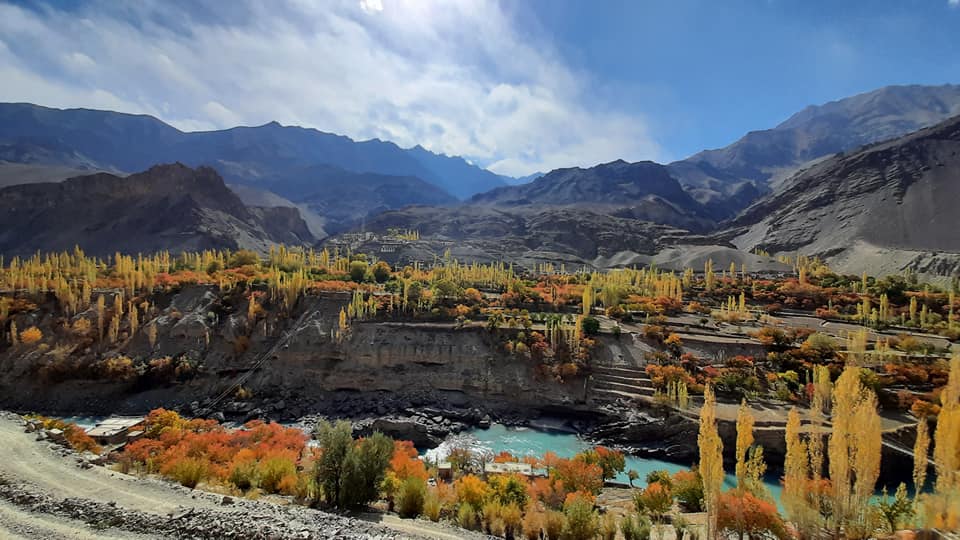
Planning a Sustainable Trip to Ladakh
Sustainable travel begins long before you arrive in Ladakh. Responsible choices during the planning phase can dramatically reduce your environmental impact and enhance your overall experience. From selecting transportation methods to choosing eco-certified tour operators and preparing the right gear, this stage sets the tone for your entire journey.
Choose the Right Season for Eco-Travel
The peak tourist season in Ladakh runs from June to August. While this period offers warm weather and open mountain passes, it also brings heavy foot traffic to popular destinations such as Pangong Lake and Nubra Valley. Consider visiting during the shoulder months of May or September, when the weather is still favorable but the crowds are thinner. This not only reduces your strain on local resources but also provides a more peaceful, intimate travel experience.
Avoid traveling in early spring or late autumn unless you’re prepared for harsh conditions and have checked route accessibility. Responsible timing helps local communities distribute income more evenly throughout the year and ensures you avoid overwhelming fragile systems during high demand periods.
Offset Your Carbon Emissions
Flying to Leh is often unavoidable, but you can still take steps to reduce your footprint. Many airlines now offer carbon offset options during booking. Alternatively, use reputable platforms like Gold Standard or Sustainable Travel International to calculate and offset your emissions through climate-positive projects such as reforestation, clean energy, or water purification.
While carbon offsetting isn’t a perfect solution, it demonstrates environmental awareness and supports global sustainability efforts. Combining it with other eco-conscious actions can significantly reduce your overall impact.
Travel by Shared or Public Transport
Once in Ladakh, opt for shared taxis, local buses, or guided group tours whenever possible. Public transport options connect major destinations like Leh, Diskit, Turtuk, and Kargil, offering a more authentic experience and reducing road congestion and emissions. Many travelers find that sharing a cab to Pangong or Tso Moriri not only cuts costs but also sparks meaningful conversations with fellow explorers.
Avoid renting private SUVs unless absolutely necessary, and skip motorbike rentals in ecologically sensitive zones where noise and fuel emissions disturb wildlife. Some eco-tour companies even provide electric vehicle options for local transport—a growing trend you can support with your booking choices.
By thoughtfully planning your Ladakh adventure, you become part of the solution—supporting communities, protecting landscapes, and ensuring this Himalayan jewel remains unspoiled for future travelers.

Staying Sustainably in Ladakh
Accommodation is one of the most important decisions a traveler makes. In Ladakh, your choice of where to stay can greatly influence your environmental footprint and the benefits that local communities receive. Thankfully, Ladakh offers a wide range of lodging options—from family-run homestays to eco-lodges—that are deeply rooted in sustainable practices and cultural preservation.
Support Eco-Lodges and Homestays
Choosing a locally run eco-lodge or homestay over a conventional hotel has a direct positive impact. These establishments often use renewable energy, recycle greywater, and follow waste separation methods. Solar panels, composting toilets, and traditional mud-brick architecture are common features in sustainable accommodations across Sham Valley, Nubra, and Changthang.
Homestays not only reduce your ecological impact, they also immerse you in Ladakhi culture. You’ll share meals with the host family, learn about local customs, and support the household economy. Look for accommodations certified by local eco-tourism bodies or recommended by responsible travel platforms. Booking directly rather than through large OTAs ensures more money stays within the community.
Respect Local Culture and Traditions
Ladakh is home to a deeply spiritual and traditional way of life. As a visitor, it’s essential to approach local customs with humility and respect. Dress modestly, especially in villages and monasteries, and always ask for permission before taking photographs of people, especially monks or women in traditional dress.
When staying with families, follow household rules—whether it’s removing your shoes before entering, helping with chores, or participating in daily rituals. Avoid criticizing local beliefs or practices; instead, be curious and open-minded. Simple acts of respect go a long way in building trust and cross-cultural understanding.
Also be mindful of resource use. Water and electricity are scarce, especially in winter months. Use them sparingly and consciously. Many eco-stays rely on solar-powered systems which are limited in supply—so turning off lights, limiting hot showers, and unplugging electronics are meaningful actions.
By staying in eco-conscious places and being a culturally sensitive guest, you create a travel experience that is both impactful and enriching—for you and for Ladakh. Your overnight stay becomes more than just lodging; it becomes a way of giving back to the land and people who welcome you.
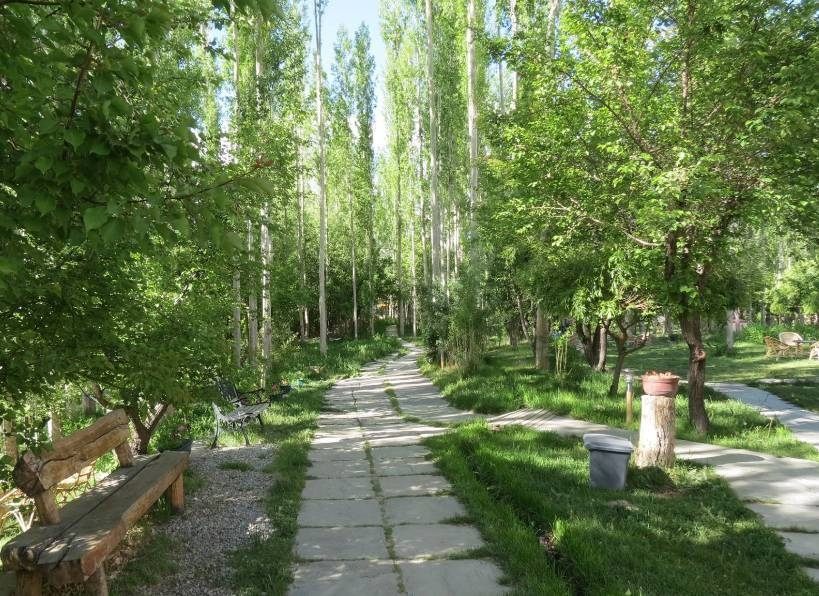
Reduce Waste and Conserve Resources
Traveling in Ladakh means entering a region where resources are scarce and waste management infrastructure is minimal. In such a delicate environment, even small acts of carelessness can lead to long-term damage. As travelers, we must adopt low-impact habits that reduce pollution, limit waste, and preserve local water and energy supplies. Sustainable travel is not just about where you go—it’s about what you leave behind.
Say No to Single-Use Plastics
Plastic pollution is one of the most pressing issues in Ladakh. With no large-scale recycling facilities, most plastic waste either gets burned—releasing harmful toxins—or ends up in the rivers and landscapes that define the region. Avoid contributing to this problem by carrying a reusable water bottle with a built-in filter or UV purifier. Refill stations are available in Leh, as well as in select villages and eco-stays along popular trekking routes.
Say no to plastic straws, cutlery, and packaged snacks. Instead, travel with bamboo utensils, cloth shopping bags, and snacks packed in reusable containers. When ordering food, request that no plastic is used for takeaway. These small actions, when practiced by thousands of travelers, can significantly reduce the burden on Ladakh’s fragile waste system.
Travel Light and Responsibly
What you pack matters. Bring only what you truly need, and ensure everything you carry in, you carry out. Choose biodegradable soaps, shampoos, and toothpaste to avoid polluting streams and soil. Bring a trash bag for your waste while trekking, and avoid leaving behind even organic waste—banana peels and eggshells don’t decompose easily in Ladakh’s cold, dry climate.
Ditch synthetic wet wipes and chemical-heavy insect repellents that can harm the environment. Look for alternatives that are eco-safe and local-friendly. If you’re trekking with a team, speak to your guide in advance about their waste management policies, and ensure they align with “leave no trace” principles.
Conserve Water and Electricity
Water scarcity is a serious issue in Ladakh. Glacial melt is the primary water source, and climate change is already reducing availability. Limit your water usage by taking short showers, avoiding frequent laundry, and reporting any leaks or water wastage in your accommodation.
Electricity in many areas is either solar-based or sourced from limited grids. Turn off lights, fans, and heating devices when not in use. Avoid charging multiple devices at once, and travel with a solar-powered charger when possible. In winter, resist the urge to overuse electric heating and opt for extra blankets or locally made woolens instead.
By reducing your consumption and managing your waste responsibly, you help Ladakh maintain its natural purity and protect the delicate balance of its high-altitude desert. These simple but powerful actions not only benefit the environment but also set an example for other travelers and locals alike.
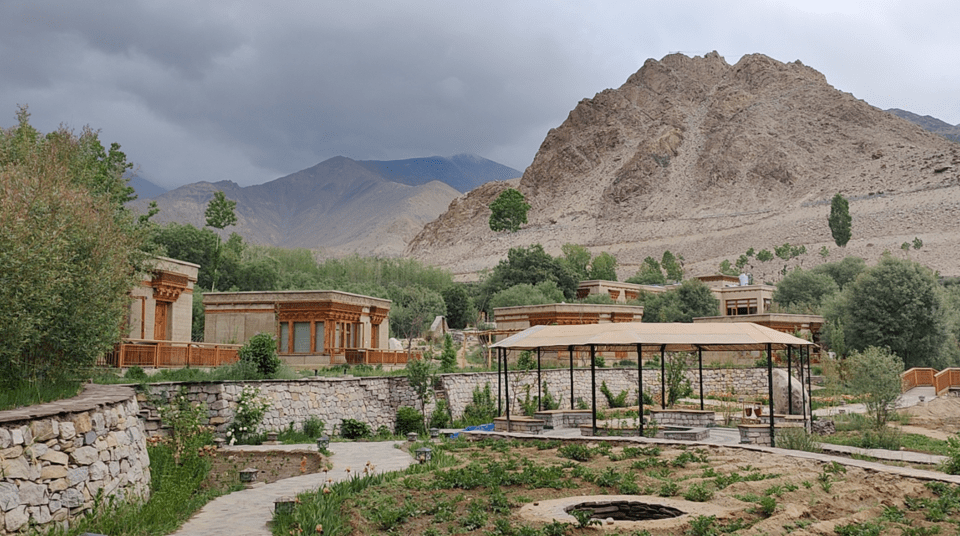
Eat and Shop Local
One of the most meaningful ways to travel sustainably in Ladakh is to support the local economy through the choices you make in food and shopping. By eating seasonal Ladakhi cuisine and purchasing directly from artisans, you not only reduce your environmental impact but also empower communities to preserve their cultural identity. Sustainable travel isn’t just about minimizing harm—it’s also about maximizing positive contributions.
Eat Seasonal, Local Ladakhi Food
Imported goods in Ladakh come at a high ecological cost. Long supply chains increase carbon emissions and create waste through packaging. Eating local helps counter this. Traditional Ladakhi cuisine is based on hardy grains like barley (used to make tsampa), fresh vegetables from home gardens, and dairy products such as yak cheese and curd. Seasonal ingredients like apricots, turnips, and spinach are often organic and grown without chemical fertilizers.
When dining out, choose restaurants that serve local dishes rather than only catering to tourist tastes. Try thukpa (noodle soup), momos (dumplings), and skyu (a hearty pasta stew). Some homestays even allow you to help prepare meals, offering a firsthand experience of Ladakhi culinary traditions. Avoid international packaged snacks and drinks whenever possible—they create waste and don’t support the local economy.
If you’re trekking, ask your guide or cook to use local ingredients, and pack dried fruits, nuts, and snacks from Leh’s markets rather than imported plastic-wrapped products.
Buy Handicrafts Direct from Artisans
Ladakh is home to a vibrant tradition of handmade crafts—from handwoven woolen shawls and Pashmina scarves to intricately carved wooden utensils and clay pots. Buying these items directly from artisans or certified cooperatives ensures your money reaches the people who created the goods, rather than middlemen or large commercial outlets.
Head to markets in Leh, Choglamsar, and small village stalls where local women often sell their work. Look for fair-trade stores or handicraft centers that provide background on who made the item and how. Popular local items include apricot kernel oil, traditional silver jewelry, natural soaps, and woven baskets. Each purchase helps keep ancient techniques alive and gives artisans a reason to pass them on to future generations.
Avoid buying mass-produced souvenirs or wildlife-related products such as fur or ivory, which contribute to unethical trade. When in doubt, ask where and how the product was made. Conscious consumption is a powerful tool for responsible tourism.
By eating local and shopping local, you become part of a circular system that nourishes Ladakh’s economy, honors its traditions, and reduces the environmental toll of mass consumerism. The meals you share and the items you take home become deeper, more meaningful parts of your journey—memories carved in flavor and craft.
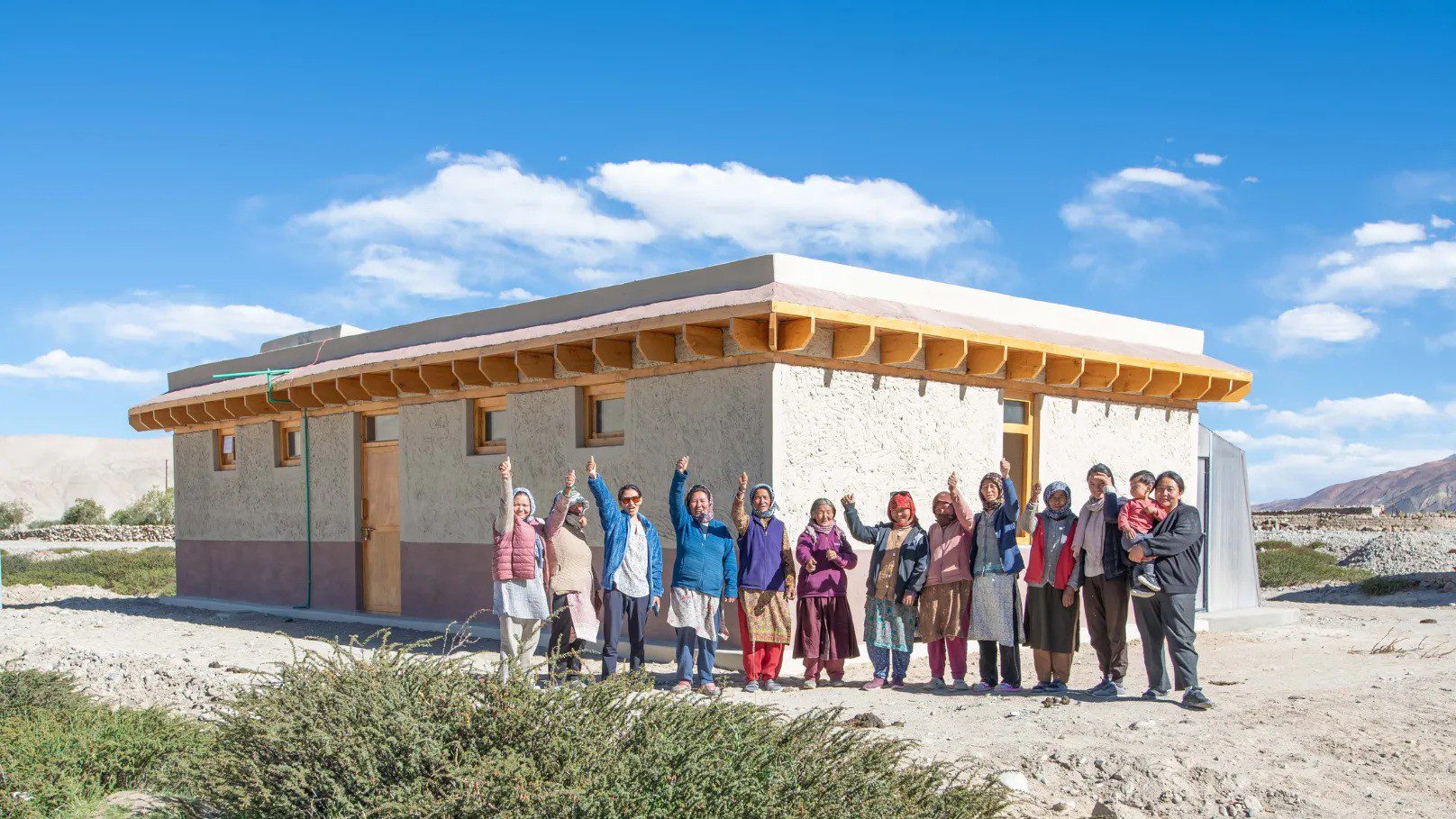
Sustainable Trekking in Ladakh
Trekking is one of the most immersive ways to experience Ladakh’s raw beauty. From high-altitude passes to hidden valleys, the region offers landscapes found nowhere else on Earth. However, with the increasing popularity of trekking routes, Ladakh’s delicate environment is facing mounting pressure. Practicing sustainable trekking is essential to protect these sacred trails, reduce human impact, and support local communities that live along the routes.
Follow ‘Leave No Trace’ Principles
Ladakh’s arid terrain does not heal quickly. What you leave behind—trash, toilet waste, or disturbed rock piles—can remain for decades. That’s why the “Leave No Trace” philosophy is crucial. Stay on marked trails to avoid trampling fragile vegetation and disturbing wildlife habitats. Don’t build cairns or take stones from sacred sites, and avoid making new fire pits or using firewood in high-altitude regions where trees are already scarce.
Carry out everything you carry in, including biodegradable items like food scraps and toilet paper. When nature calls, dig a small hole at least 60 meters from water sources and cover it properly. Use a reusable container for storing waste until you can dispose of it responsibly in Leh. Avoid washing dishes or clothes directly in rivers or streams—use a basin and biodegradable soap away from water sources.
The less you leave behind, the more unspoiled Ladakh remains for future generations of trekkers and for the wildlife who call it home.
Trek With Local Eco-Guides and Porters
Hiring local guides and porters isn’t just a way to get assistance on difficult treks—it’s a commitment to community support and cultural exchange. Certified eco-guides from Ladakh know the land, the weather, and the traditions better than anyone. They can lead you safely through remote regions while educating you on responsible practices and local customs.
Porters from villages such as Skiu, Rumbak, or Lingshed rely on seasonal trekking income. Treat them respectfully, ensure fair wages, and check if the trekking agency you book with follows ethical labor practices. When possible, join trekking companies that are Ladakhi-owned or community-operated, so your money remains within the local economy.
Trekking routes like the Markha Valley, Lamayuru to Alchi, or the Sham Valley are now adopting eco-initiatives—such as fixed waste collection points and homestay networks. Supporting these efforts helps normalize sustainability across the region.
By trekking mindfully, you reduce your environmental impact while deepening your appreciation of the landscapes, culture, and people that make Ladakh unforgettable. Sustainable trekking transforms adventure into stewardship—where every step you take is aligned with the values of respect, care, and connection.
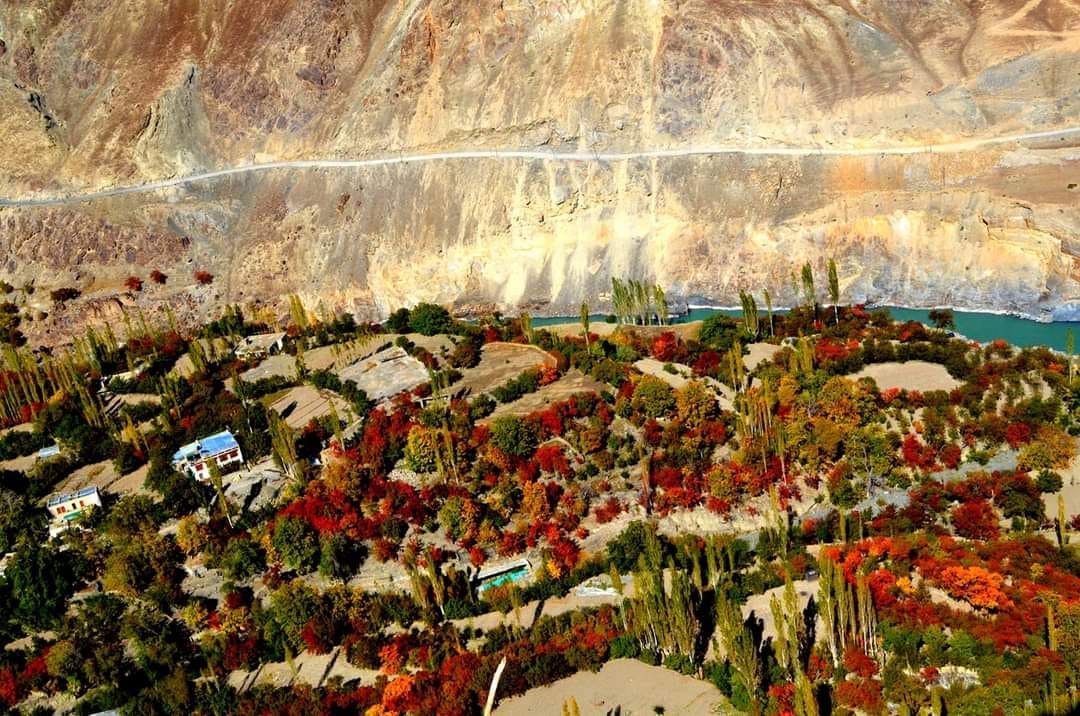
Contribute to Local Conservation
Sustainable travel is not just about reducing your footprint—it’s also about giving back. In Ladakh, where climate change, tourism, and modernization are rapidly transforming both landscapes and lifestyles, your journey can become a force for good. By actively participating in local conservation efforts, you help protect the region’s natural and cultural heritage while deepening your own travel experience.
Join Local Clean-Up Drives or Eco Projects
Travelers often pass through some of the most remote and scenic areas of Ladakh, but these places are increasingly impacted by litter and unmanaged tourism waste. Several Ladakhi NGOs and local youth groups organize clean-up drives along trekking routes like Markha Valley, Sham Valley, and in areas surrounding Leh and Diskit. These events are open to volunteers and provide a powerful way to leave a positive mark on the land.
You can also join short-term eco-projects such as tree-planting in reforestation zones, assisting in solar energy workshops, or teaching environmental awareness in schools. Even if your time is limited, contributing for just one afternoon can help raise awareness and support long-term goals of the community. Many homestay owners and guesthouse operators are also involved in grassroots projects—ask if they know of any local efforts you can support during your stay.
Giving your time and energy, even briefly, connects you to Ladakh’s environmental story in a meaningful way. It also encourages a culture of sustainability among other travelers and hosts alike.
Donate to Conservation NGOs in Ladakh
If you don’t have time to volunteer in person, consider supporting organizations that are doing the hard work year-round. Ladakh is home to several impactful conservation NGOs, including those focused on snow leopard protection, traditional architecture, water management, and heritage education. Even a small donation helps fund essential programs such as wildlife monitoring, high-altitude research, and school outreach campaigns in remote areas.
Before donating, take time to research the organization’s goals, transparency, and community involvement. Look for groups that work in partnership with locals and avoid top-down models that do not include Ladakhi voices in decision-making. Reputable organizations often provide donation receipts, reports on project outcomes, and opportunities to follow up on how your contribution made a difference.
Supporting conservation financially ensures the future of Ladakh’s snow leopards, nomadic cultures, and pristine river valleys. It’s a way to extend your journey beyond borders—and into long-term impact.
By aligning your travels with conservation goals, you become more than a visitor. You become a participant in preserving Ladakh’s wild, sacred, and human elements. These acts of engagement transform your adventure into a lasting legacy of care.

Final Thoughts: Becoming a Conscious Explorer
Sustainable travel is not a trend—it’s a mindset. It’s about understanding your relationship with the places you visit and making conscious choices that respect the land, the culture, and the people who call it home. In Ladakh, where nature and tradition coexist in a delicate balance, every decision you make as a traveler carries weight. Whether you’re trekking across high passes or sipping butter tea in a remote village, your awareness and intention matter.
Sustainability Is a Journey, Not a Checklist
There is no perfect eco-traveler. Traveling sustainably doesn’t mean being flawless—it means being thoughtful. Sometimes, despite your best efforts, you may leave behind a footprint. What’s important is striving to do better each time. Bring your own water bottle. Stay in homestays. Say thank you in Ladakhi. Offset your emissions. Choose slow travel over instant gratification. These small, repeated actions shape your role as a conscious explorer.
Each sustainable choice is a vote for a better travel industry. You’re not just consuming a destination; you’re investing in its future. When enough travelers choose wisely, demand shifts—and tourism begins to support, rather than deplete, the places we love.
You don’t need to change the world with a single trip. But you can travel in a way that honors Ladakh’s ancient landscapes and living traditions. Be curious, be kind, and always leave places better than you found them. The mountains are watching—and they remember how you walk among them.
As your Ladakh journey unfolds, remember that the essence of sustainable travel lies not only in the trails you follow but in the values you carry. In this way, you don’t just travel through Ladakh—you become part of its story.

